| Hollywoodland | Jun 30 2021 |

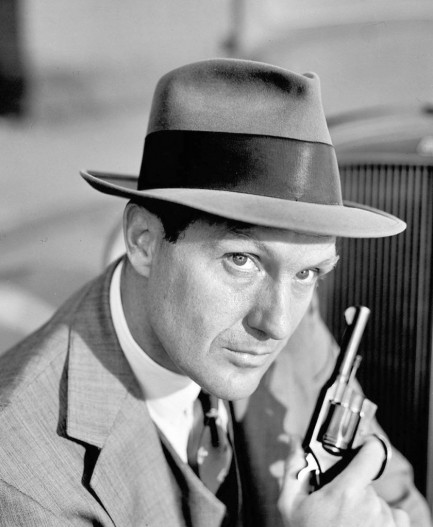
| Vintage Pulp | Jun 9 2021 |

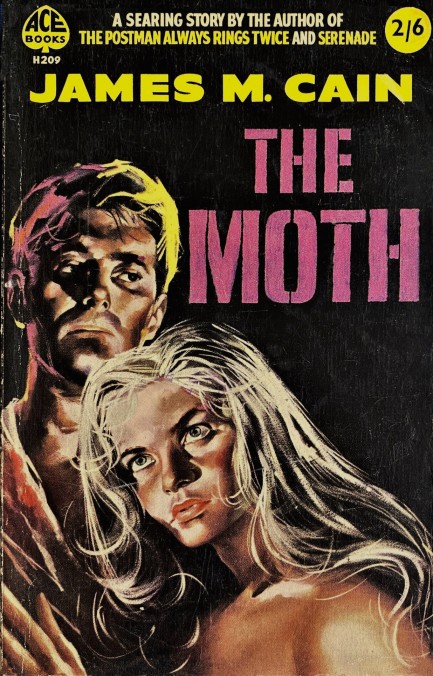
| Vintage Pulp | Oct 2 2018 |

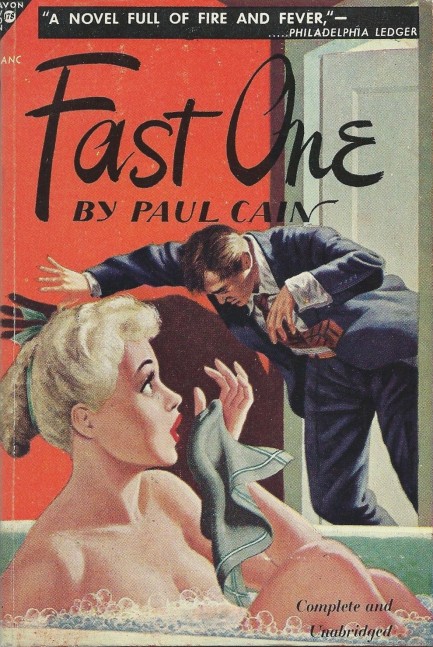
The cover art for this 1948 Avon edition of Paul Cain's Fast One kind of looks like a guy's about to drop dead in front of a bathing woman, but actually he's merely been shoved into the bathroom by the story's anti-hero protagonist. It's always interesting which moment an artist (or a publisher directing an artist) will choose for a cover. This is not an important event in the narrative, but the chance to show a woman in the bath was apparently too enticing to pass up.
The backdrop here is prohibition era Los Angeles and the main character Gerry Kells and the femme fatale S (we never learn her first name) are pulled into a maelstrom of trouble when Kells refuses to work for his old crime buddies and in retaliation they frame him for murder. The novel was put together from five stories that appeared in Black Mask magazine, and when it was published Cain—aka Peter Ruric, aka George Sims—was hailed as a giant of hard-boiled fiction on par with Hammett and Chandler. We don't know about that, but Fast One is a good read—bare bones and quick paced and filled with random brutality.
The bio page for Fast One says Cain “has lived as he writes—at high speed and with violence.” It's a phrase that makes you want details but none are provided. We imagine the description is accurate, though, because Cain published this single novel, as well as some screenplays (including for The Black Cat), then vanished into obscurity and eventually died of alcoholism.
| Vintage Pulp | Jul 30 2017 |

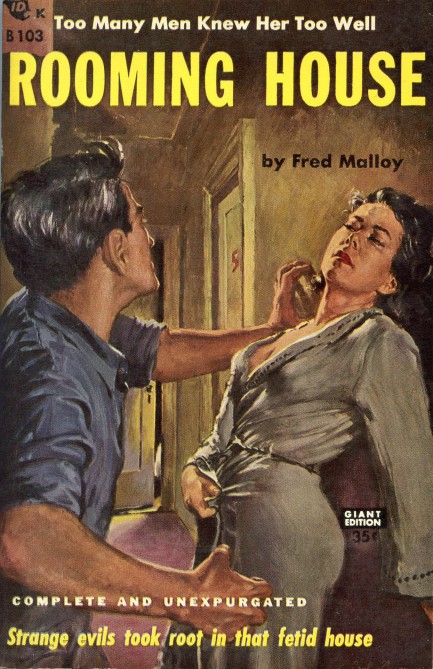
You ever stay in a place and the internet sucks? It happens to us all the time. The amenities are also sorely lacking at Guido d’Arpino's San Francisco rooming house, but at least his daughter Emma is sexually available to most of the guests that roll through, including touring saxophonist Harry Purcell. Their involvement produces an unexpected customer bonus: pregnancy! The impending arrival of the little d’Arpino sets into a motion a series of events that leads to murder. Since the story is told in flashback at Harry's trial, none of this is a surprise, but the details of how he ended up in the dock are interesting, and in the end the lesson of this Prohibition era tale is clear—never get involved with a musician. And we say that as musicians. We're the worst. Pretty good book, though. In the same way San Fran exteriors are used in some of the best mid-century noir movies, author Fred Malloy (a pseudonym too involved to work out on a perfect beach day, sorry), uses San Fran specificity to spice this one up. For people interested in the city, that alone probably is worth the price of the book. 1954 copyright on this edition, and cover art by Saul Levine.
| Intl. Notebook | Jul 14 2017 |

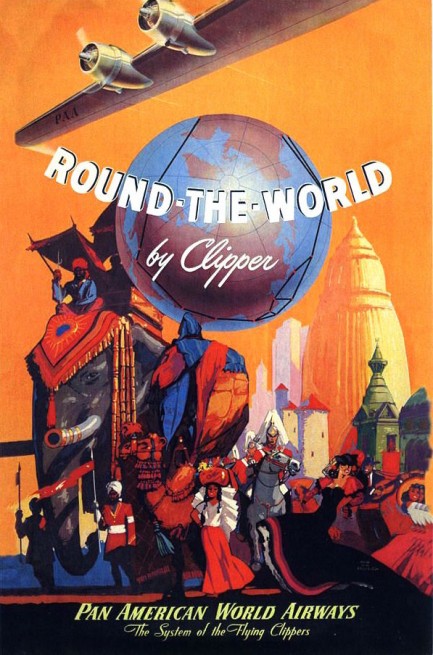
Pan American World Airways knew how to imbue travel with an aura of romance. It launched in the late 1920s with mail service from Key West to Havana, and quickly expanded to become a passenger airline. Business boomed—well heeled Americans took flights to Havana in droves in what became known as the Cocktail Circuit, escaping U.S. prohibition to enjoy a weekend of decadent nightclubs and gambling before returning in time for Monday's real world obligations. Soon Pan Am expanded service throughout Latin America and the world. It bought seaplanes to get around the problem of many cities not having proper airports. With the ability to use docking facilities, virtually no destination was inaccessible.
The company dubbed its seaplane fleet “clippers,” evoking the masted sailing ships of the oceangoing era, and their draw was not just their mobility but their luxury. Some say it was a different era of corporate governance, a time when the mandate in the commercial travel industry was to earn loyalty with good service rather than to blackmail customers into avoiding misery. This is partly true, but it's also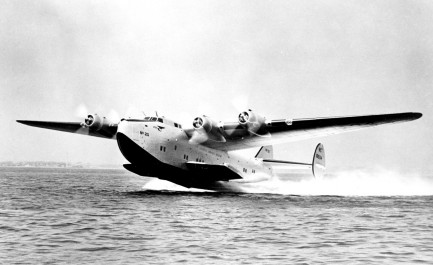
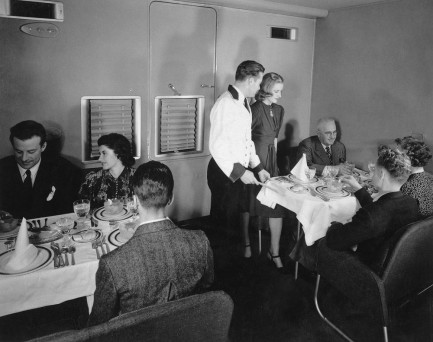 important to remember that air travel was initially considered a luxury indulgence. It was with the advent of travel for the masses that airlines began to exchange services for profitably packing people in like sardines. In that sense, their priorities have not changed much in fifty years.
important to remember that air travel was initially considered a luxury indulgence. It was with the advent of travel for the masses that airlines began to exchange services for profitably packing people in like sardines. In that sense, their priorities have not changed much in fifty years.
Pan Am soon began promoting its services with colorful posters, many of which were created by a talented artist named Mark von Arenburg. These prints, which promised to take passengers around the world by clipper, hung mainly in airports and travel agencies and gave passersby fantastic glimpses of faraway destinations—indeed, it's difficult to look at any of them without feeling the pull of the exotic wider world. The company produced hundreds of these promos in various styles and multiple languages, but for our purposes we're interested today only in the posters advertising travel on that elegant Pan Am clipper.
Over the years the fleet evolved from seaplanes to jets, and while all were called clippers, it's the lovely skyboats that are most fondly remembered—and which provided so many entertaining settings in old movies and pulp fiction. The posters you see below are scans of both originals and reproductions, and there are quite a few. Even so, it isn't a complete collection. Some of the most famous posters are so rare they simply can't be found online at the moment. While it's true that air travelers are mainly treated like cattle rather than customers today, and commercial flying is a form of voluntary torture, the destinations are still there to make those difficult hours in the air worthwhile. Let these posters inspire you.
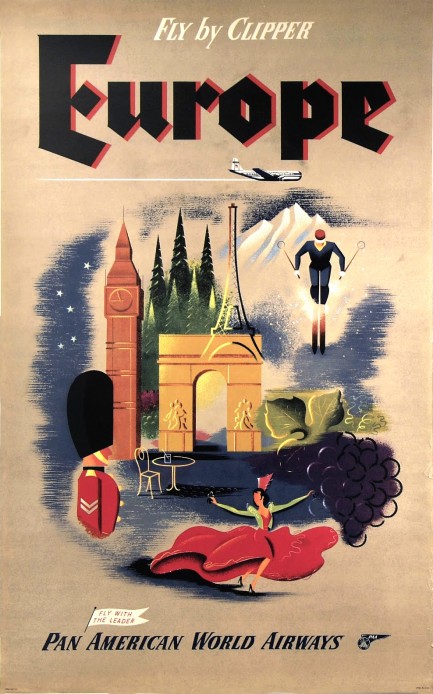
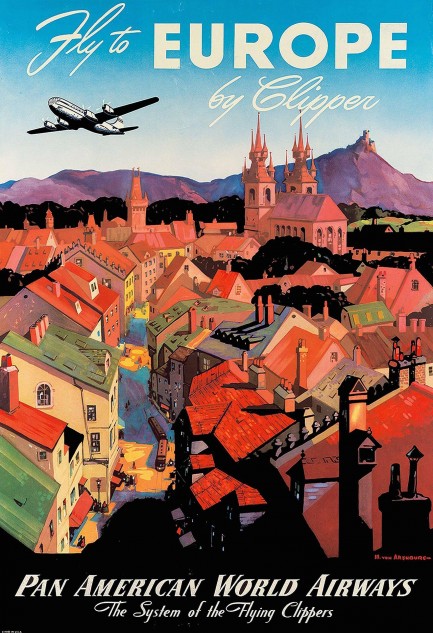
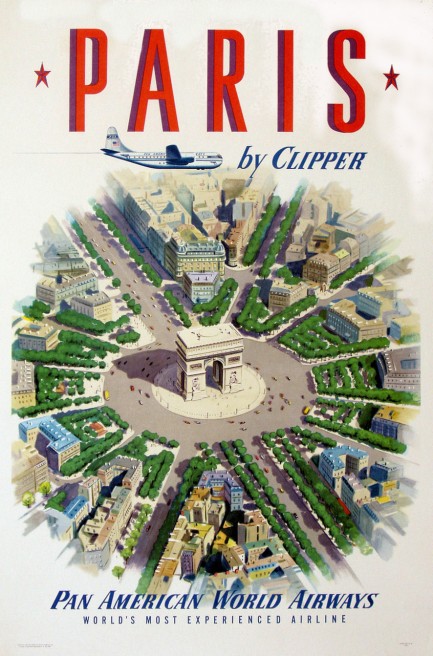
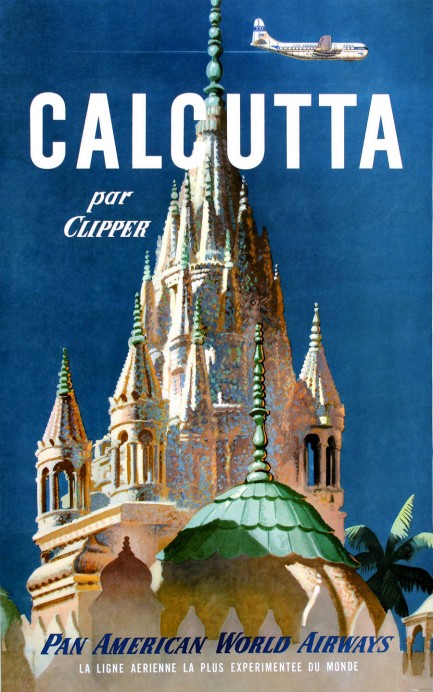
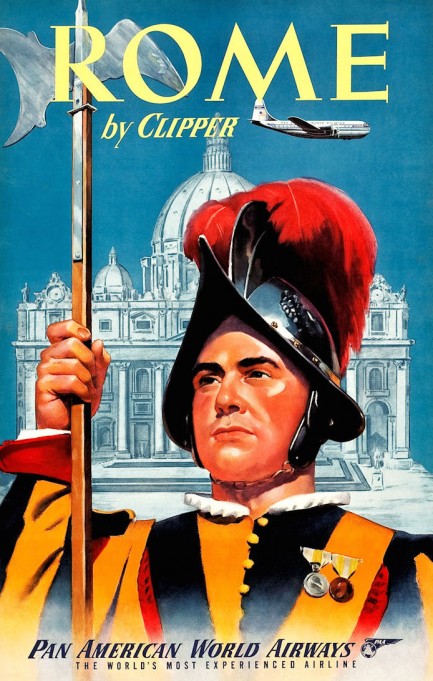
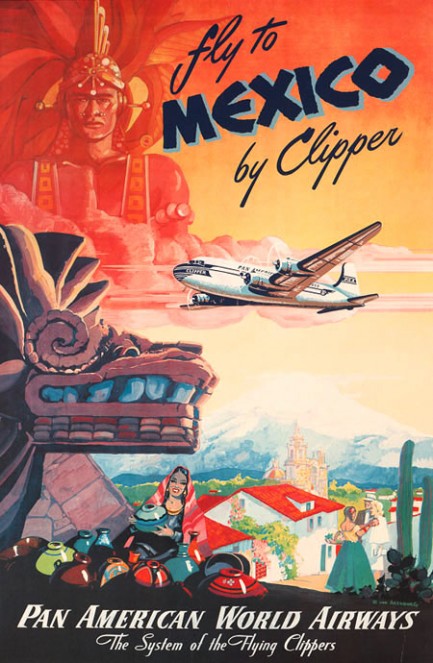
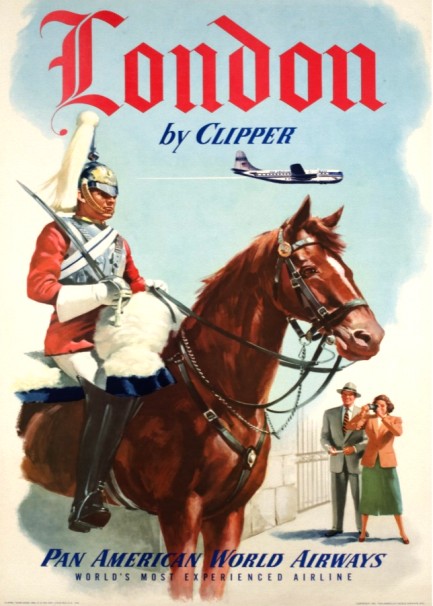
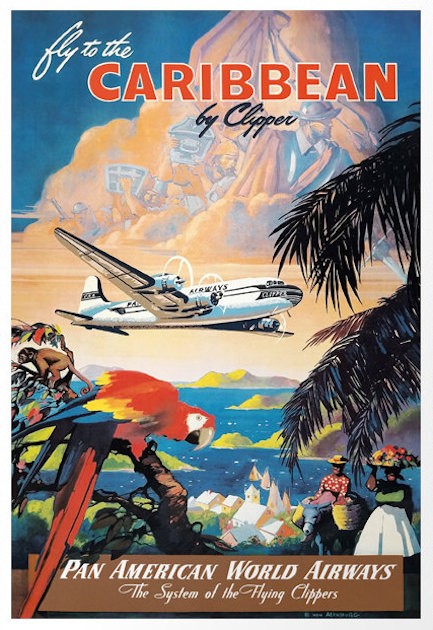
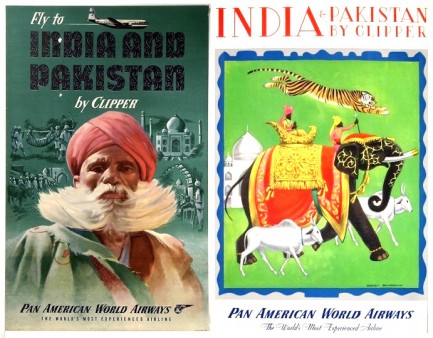
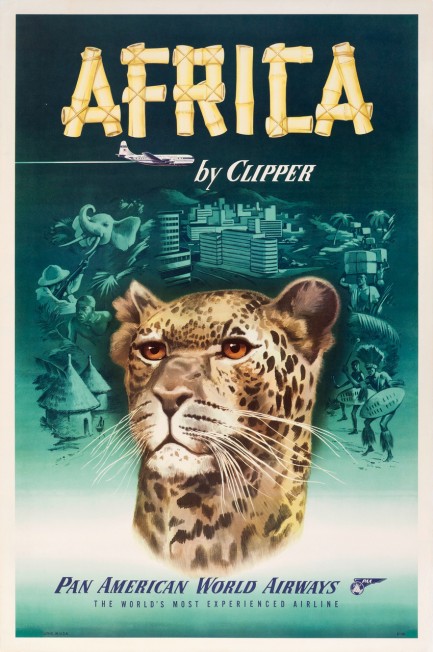
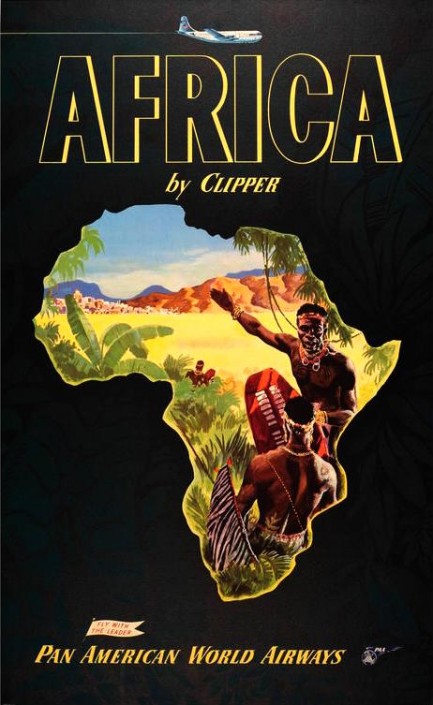
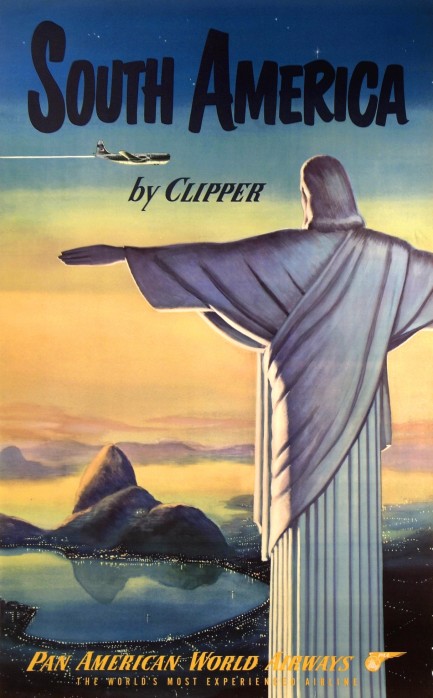
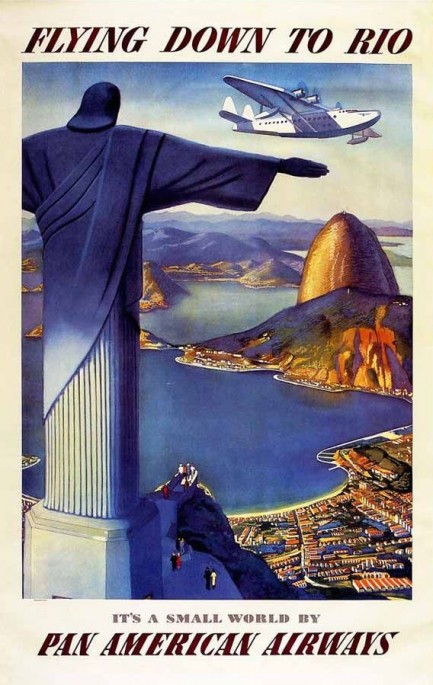
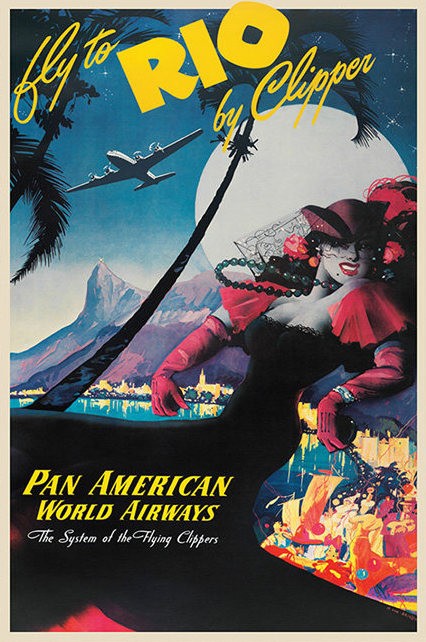
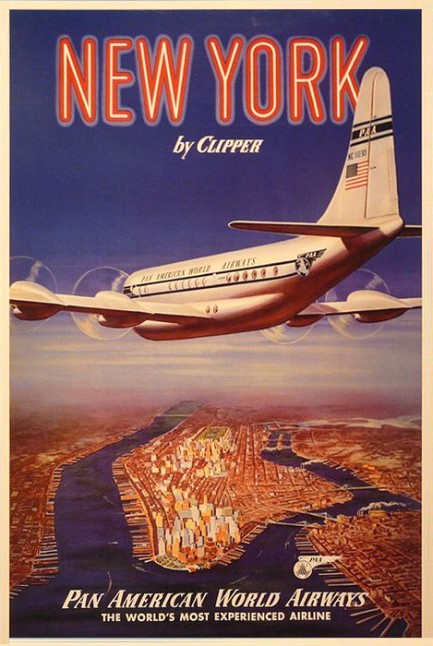
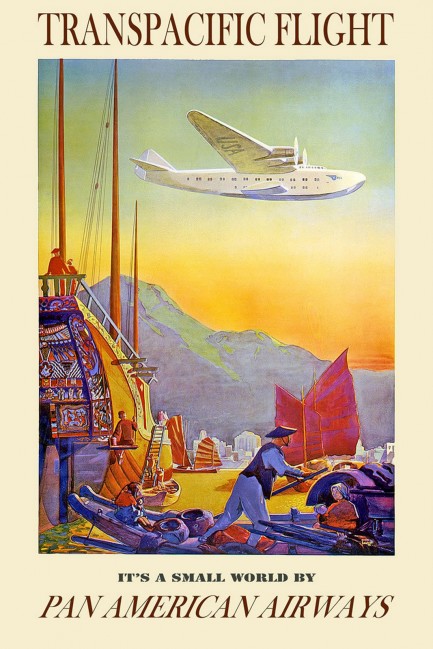

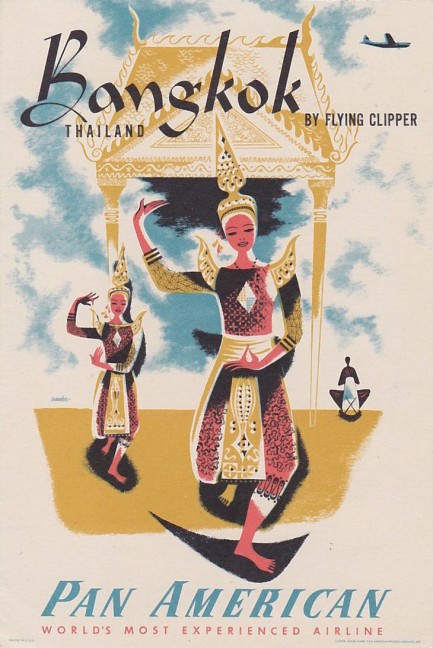
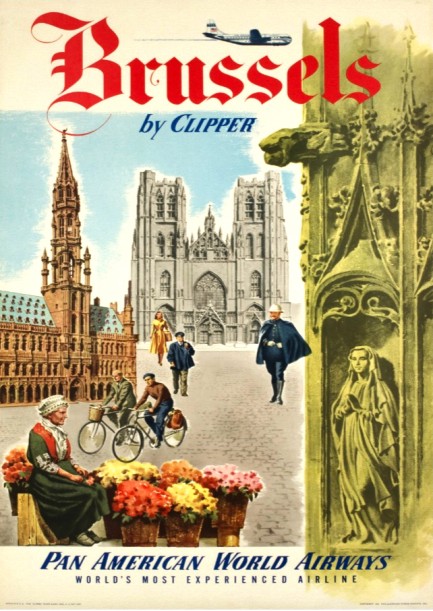
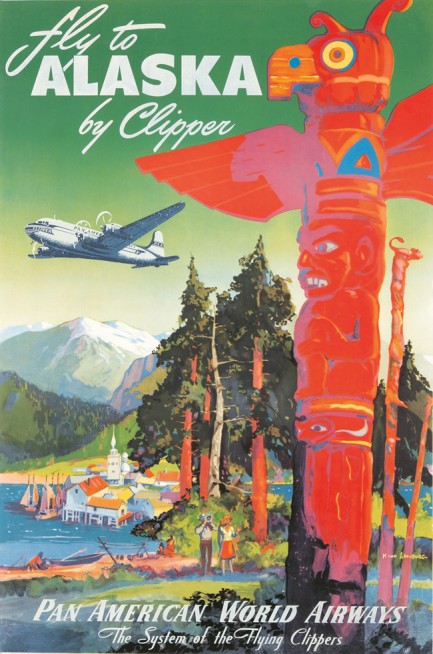
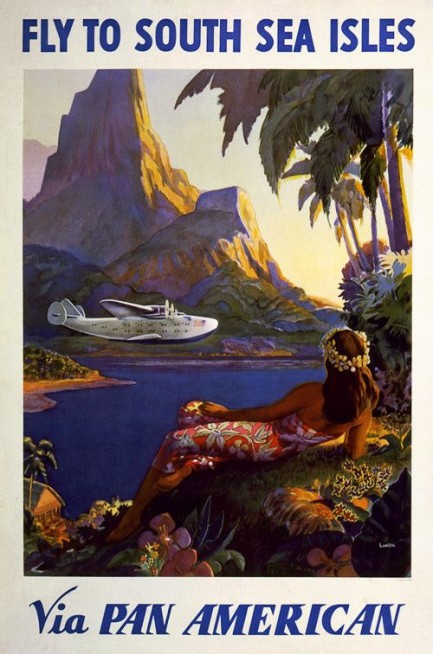
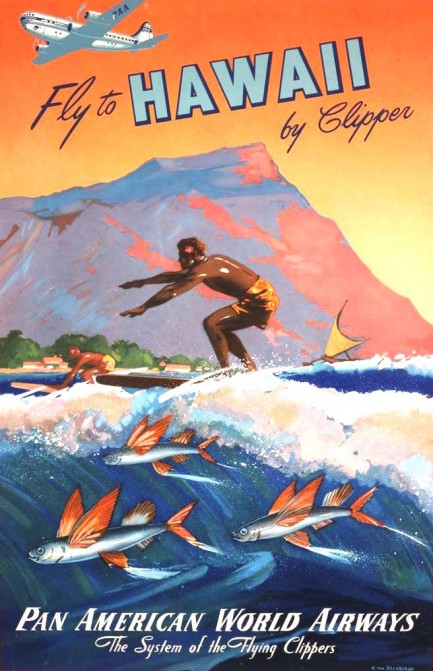
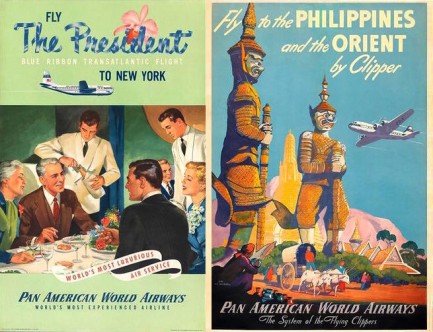
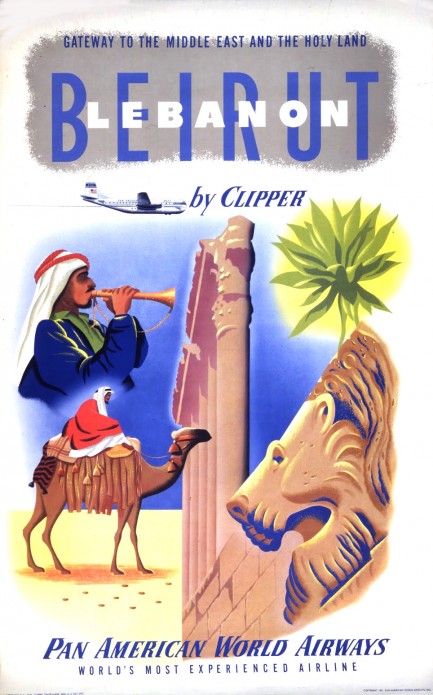
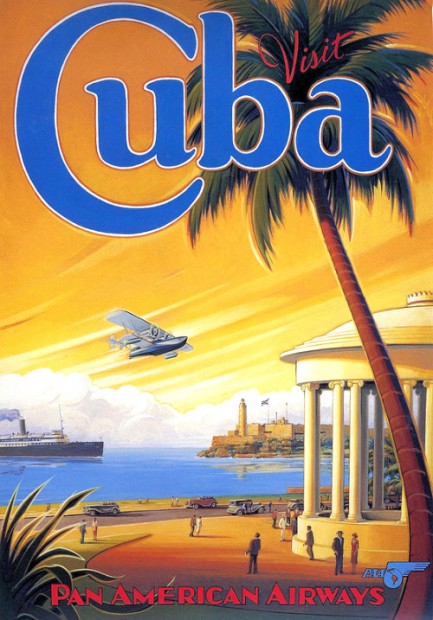
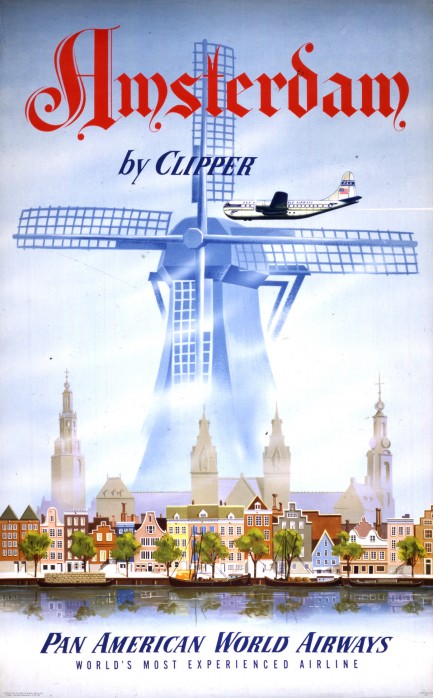
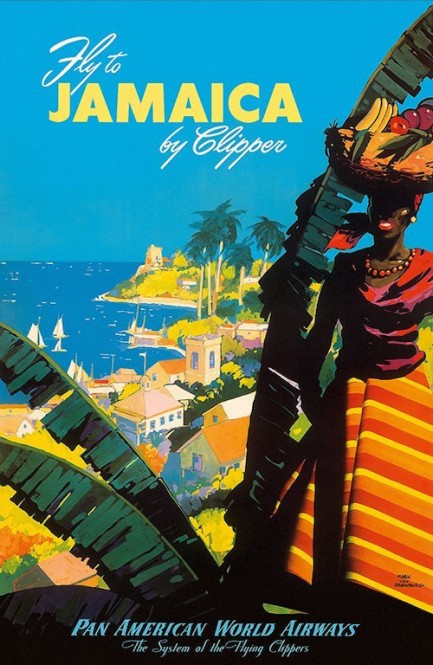
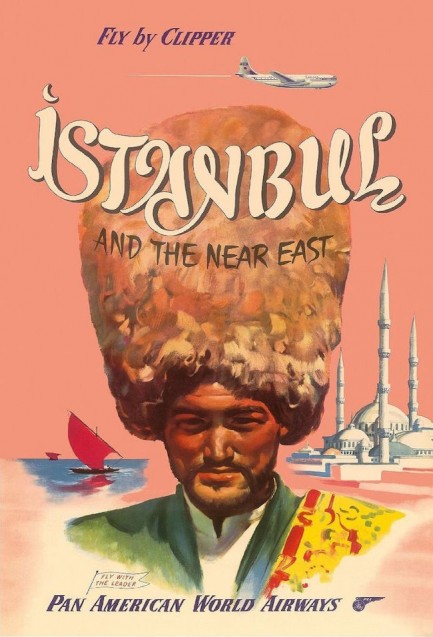
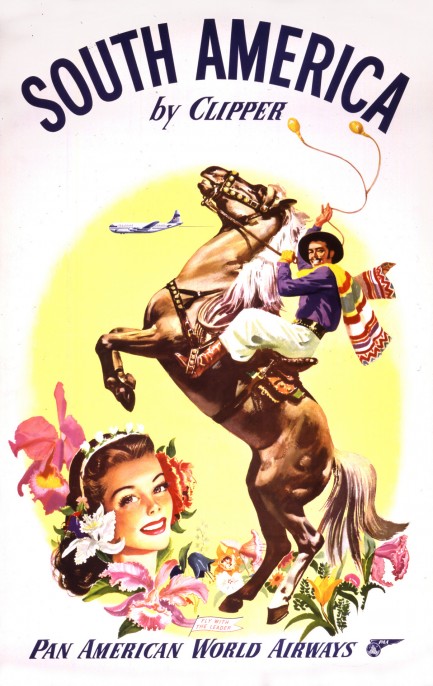
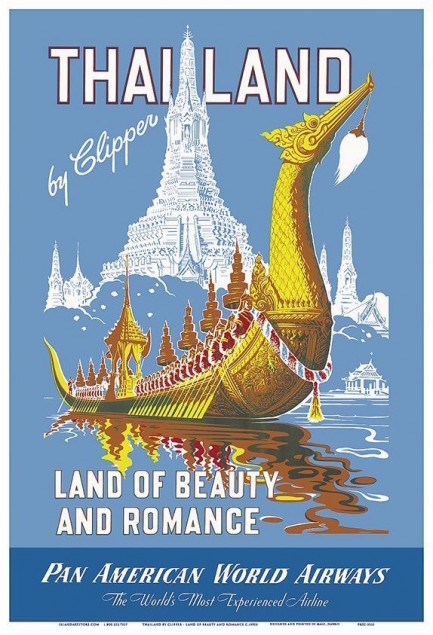
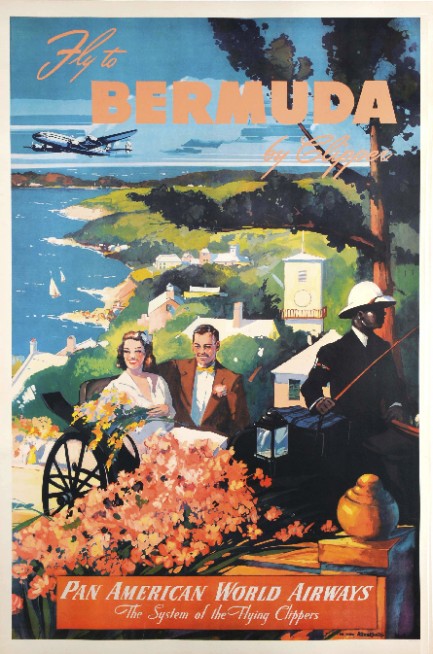
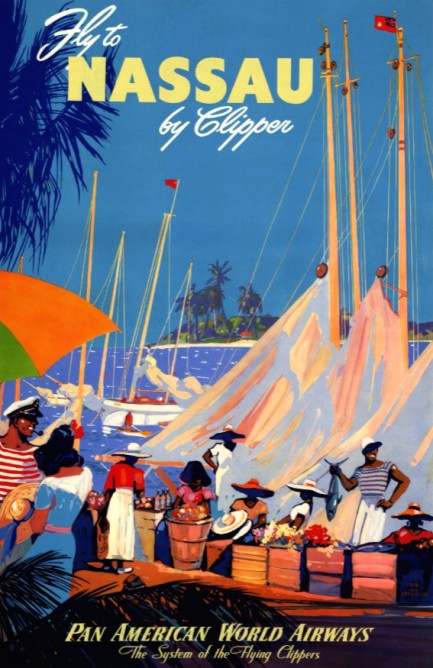
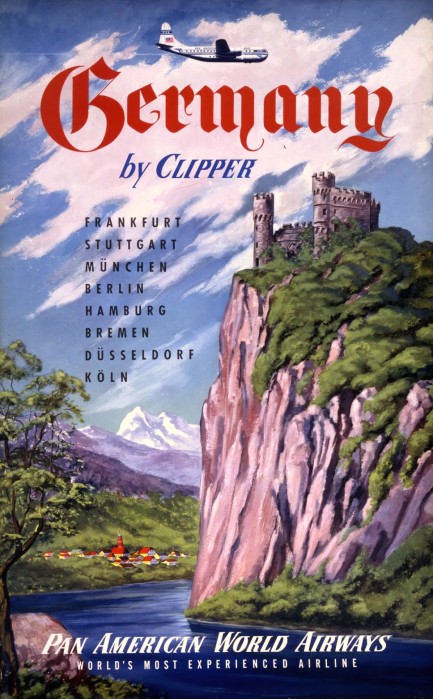
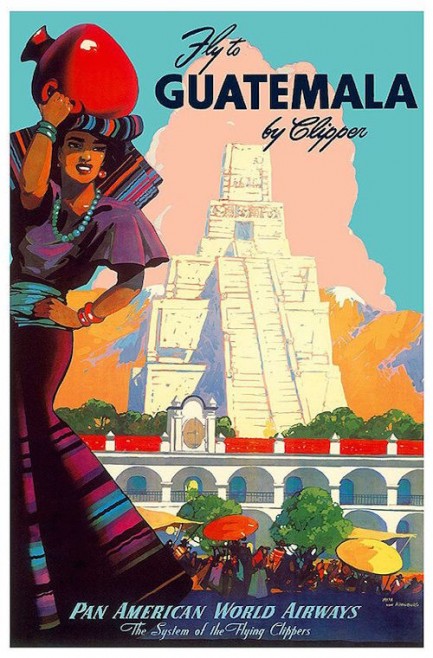
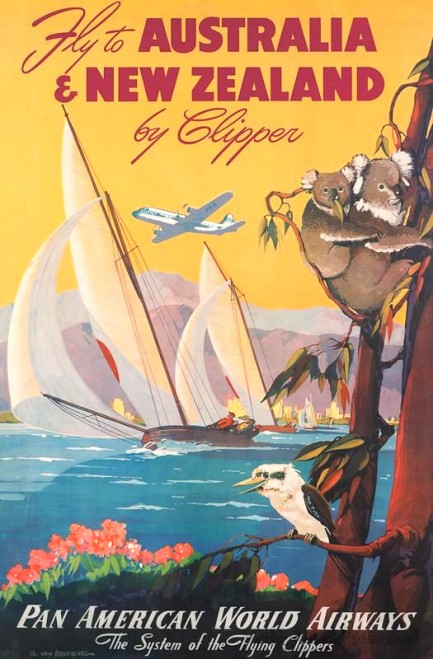

| Vintage Pulp | Sep 9 2016 |

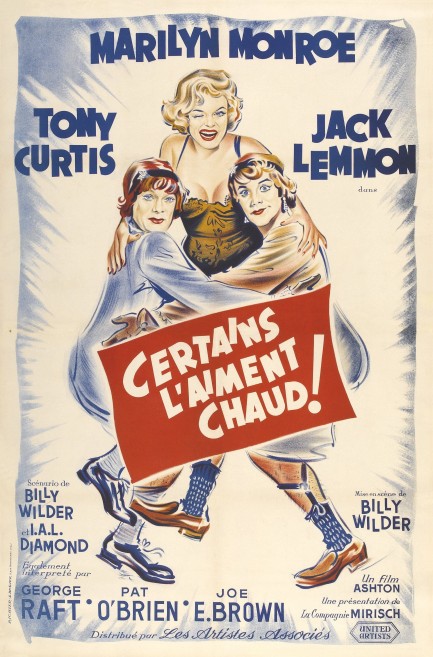
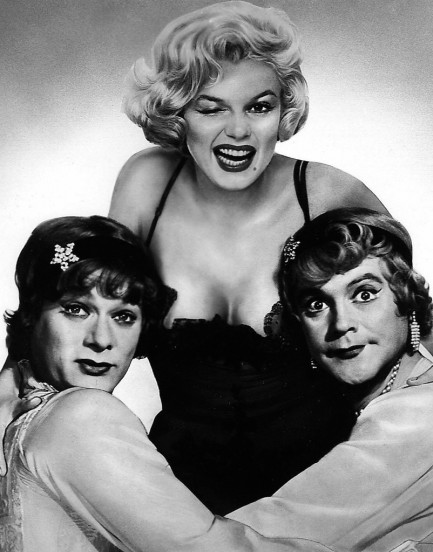 On this promo poster for the Marilyn Monroe comedy Certains l'aiment chaud, aka Some Like It Hot, it looks like Russian illustrator Boris Grinsson went a little strong on Monroe's wink, making her look like she got a splinter of glass in her eye, but Monroe actually looked that way in the promo photo used as the basis of the art, which you can see at right.
On this promo poster for the Marilyn Monroe comedy Certains l'aiment chaud, aka Some Like It Hot, it looks like Russian illustrator Boris Grinsson went a little strong on Monroe's wink, making her look like she got a splinter of glass in her eye, but Monroe actually looked that way in the promo photo used as the basis of the art, which you can see at right.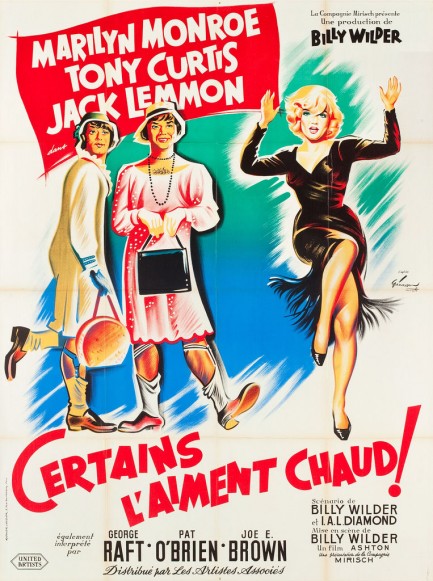
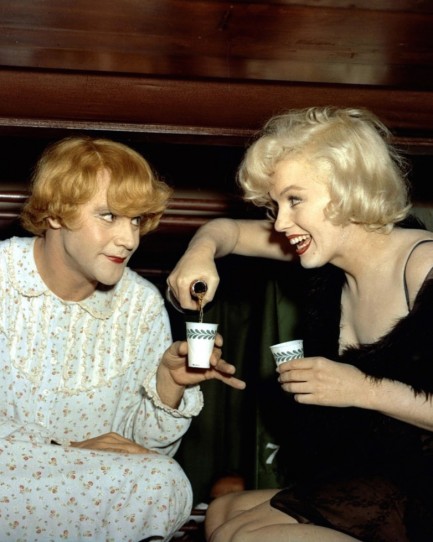
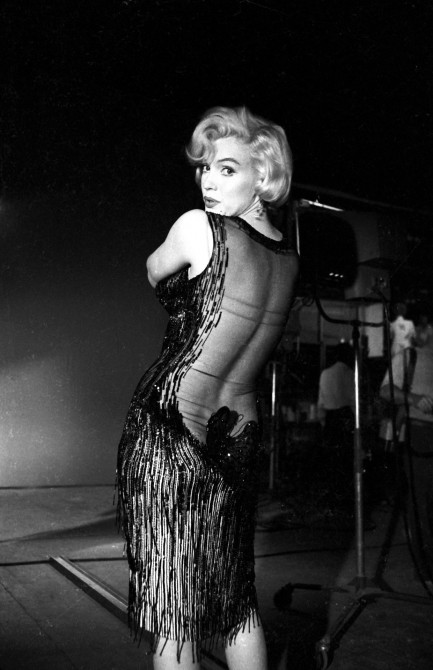
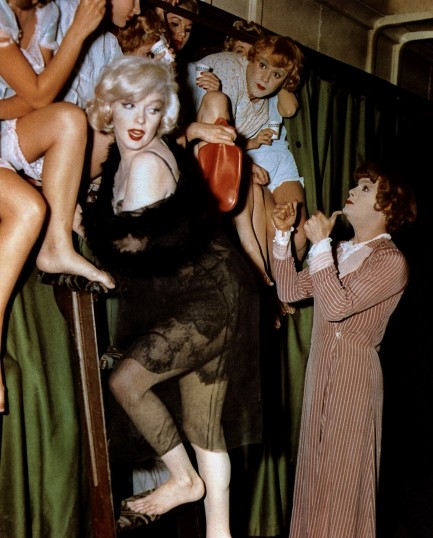
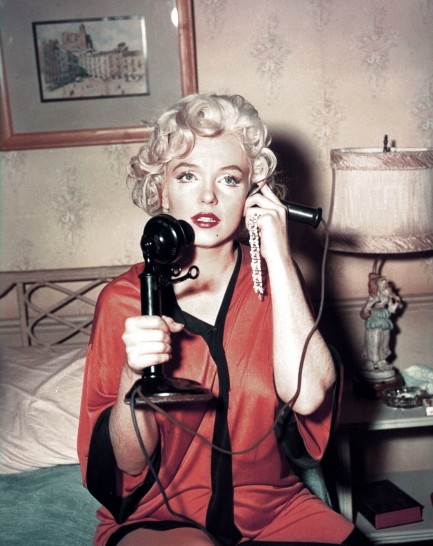
| Intl. Notebook | Feb 21 2013 |

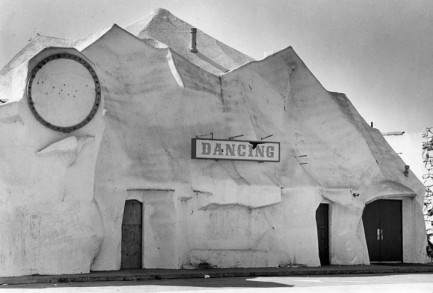
Remember our two write-ups on early 20th Century programmatic architecture in the Los Angeles area? No? They’re here and here. Check ’em out. Oh, and if you’re really interested, there’s another amazing example here with an entire story behind it. Anyway, here’s a new structure to add to the collection. This is the Mt. Baldy Inn, an iceberg-shaped dance hall built in 1927 that was located in the Pico Rivera area of greater Los Angeles. The inn was popular during the Depression, and was supposedly famous for using freshly squeezed oranges in its signature orange freeze drink. We're guessing the orange freeze was basically a non-corporate Slurpee. This would have been during those sad, alcohol aversive years known as Prohibition, but we bet an extra fiver would've gotten your drink pimped out with a shot of whisky. If the booze didn't get you hopping around, the brain freeze would. This image originally came from the Los Angeles Public Library, but we saw it on the excellent architecture forum skyscraperpage.com, so thanks to those folks for doing the hard work of finding this photo.
| Vintage Pulp | Jan 14 2013 |

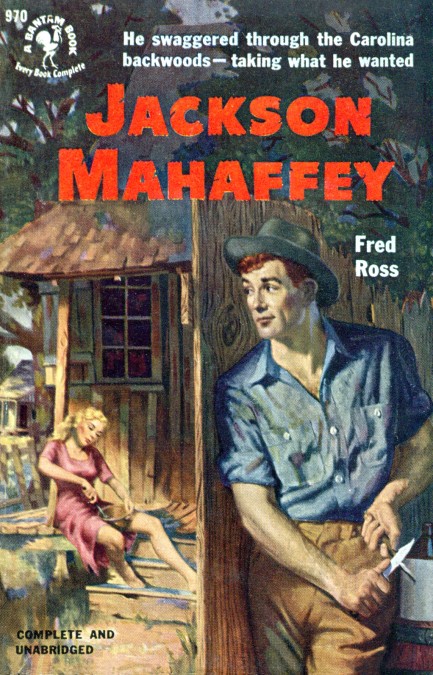
We had completely forgotten about Fred Ross’s Jackson Mahaffey until we ran across this great cover. We read the book back when we first got into pulp literature. Our version was a Riverside Press hardback, but we wish we’d had this Bantam mass market paperback. Note the stick at crotch level and the masturbatory motion that would be required to whittle it. Also note the unsuspecting lass and the mixing bowl between her legs. As it turns out, though the book is indeed about a man trying to get his stick in a girl’s bowl, it’s also a very funny square peg/round hole story in a broader sense.
Published in 1951, with the paperback appearing a year later, Jackson Mahaffey is set in Prohibition era North Carolina, and is told in first person by the eponymous Jackson, an orphan who has grown up to be a master liar, consummate hustler, and inveterate horndog. When he catches a glimpse of beautiful Molly Burns, he decides he simply must have her, but in order to do so he must appear to be a respectable gentleman. Just a few of the things poor Jackson gives up to woo the girl: cussing, brawling, smoking, cock fighting, and drinking. Pretty tough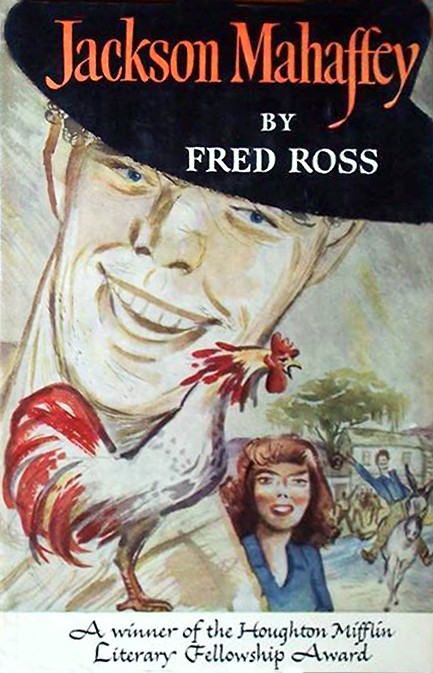 makeover for a guy who manages the meanest fighting cock on the Rock River and carries brass knuckles and a pistol in his pocket, but he gives Southern gentility a go anyway, even though the subterfuge cannot possibly last.
makeover for a guy who manages the meanest fighting cock on the Rock River and carries brass knuckles and a pistol in his pocket, but he gives Southern gentility a go anyway, even though the subterfuge cannot possibly last.
When he inevitably falls off the wagon, the only way he can think of to get back into Molly’s good graces (and hopefully into her panties) is to run for state senator. It should be an impossible task for a rootless hick like Jackson, but it turns out that everything he’s learned during his years of double dealing and raising hell suddenly work to his advantage. This is politics, after all, and he’s uniquely equipped with malleable morals and lots of friends in low places. Filled with backwoods humor and Jackson’s particular brand of countrified wisdom, this one is well worth a read.
| The Naked City | Nov 28 2012 |

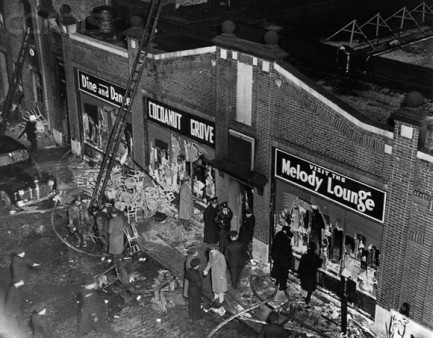
Above is a photo of the aftermath of the Cocoanut Grove fire of 1942. Its appearance belies the scope of the disaster that took place there. The Cocoanut Grove had been founded as an illegal speakeasy and, after the 1933 repeal of Prohibition, became Boston’s trendiest nightspot. It consisted of several properties that had been consolidated into one, and was a labyrinth of tropical-themed bars, lounges, and dining rooms, complete with a famous “rolling roof” that allowed patrons to dance under the stars during warm summer nights. The club’s cobbled together construction meant there were many points of egress, but owner Barnet “Barney” Welansky was preoccupied with the possibility of people using these to dash without paying their checks, and had hidden some exits behind curtains, locked others, boarded up a plate glass window, and bricked over an emergency exit.
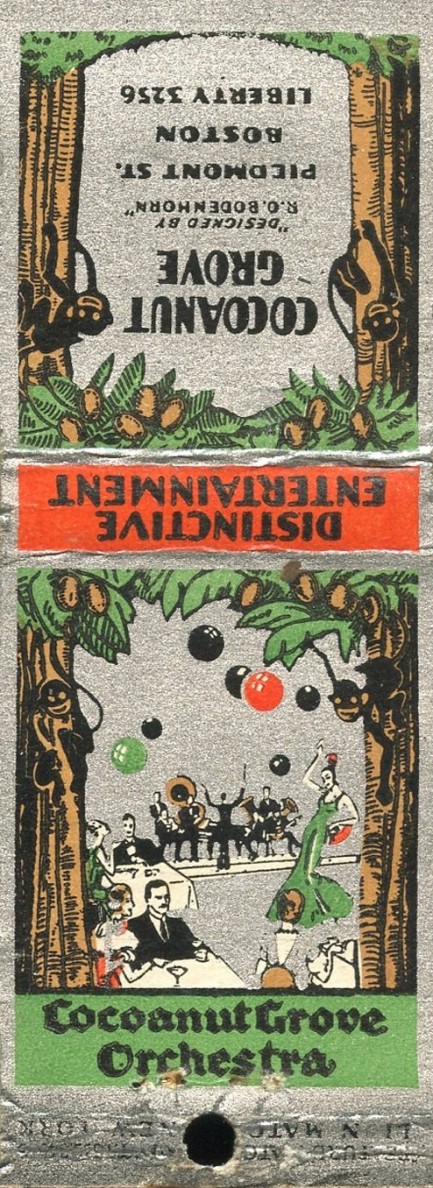 About 10:15 p.m. one frigid November night a fire started for the most banal of reasons. A soldier in the Melody Lounge, which was in the basement, had either loosened or removed a light bulb in an artificial palm tree to create the privacy he desired in order to make out with his date. A busboy was ordered to replace or tighten it. He climbed onto a chair and lit a match so he could see, very likely using one from a matchbook like the one at right. Moments later the canopy of artificial palm fronds overhead caught fire. Whether it was the match or the light bulb that started the blaze nobody ever figured out for sure, though the busboy unambiguously blamed himself and the match.
About 10:15 p.m. one frigid November night a fire started for the most banal of reasons. A soldier in the Melody Lounge, which was in the basement, had either loosened or removed a light bulb in an artificial palm tree to create the privacy he desired in order to make out with his date. A busboy was ordered to replace or tighten it. He climbed onto a chair and lit a match so he could see, very likely using one from a matchbook like the one at right. Moments later the canopy of artificial palm fronds overhead caught fire. Whether it was the match or the light bulb that started the blaze nobody ever figured out for sure, though the busboy unambiguously blamed himself and the match.
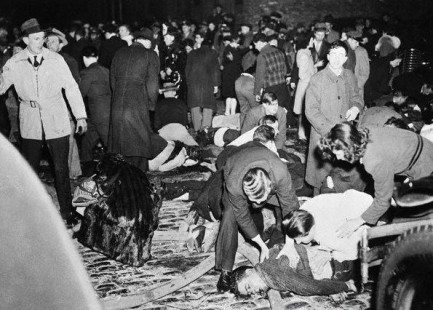
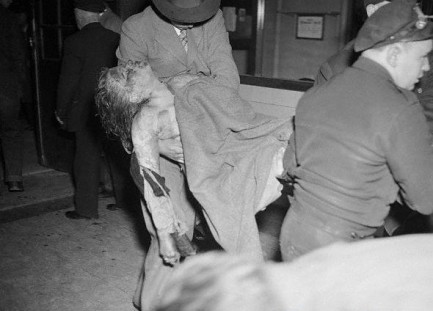
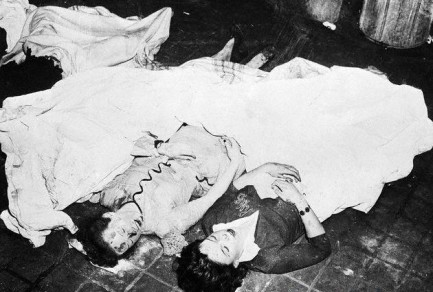
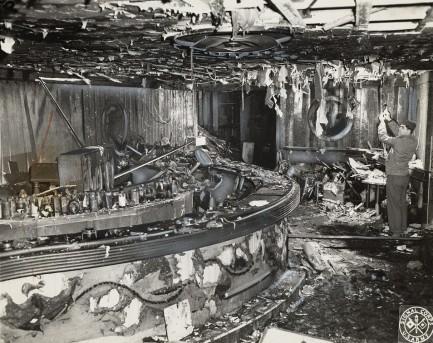
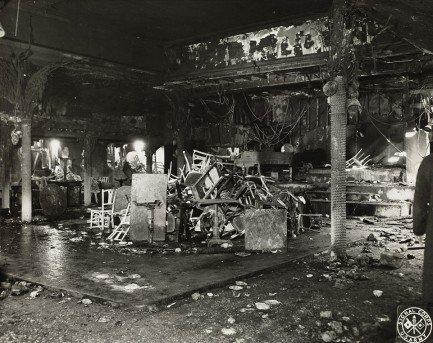
| Intl. Notebook | May 30 2012 |

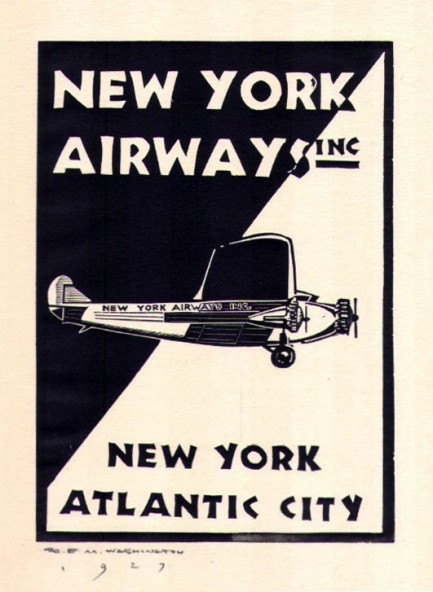
A while back we showed you a woodcut print commemorating New York City’s famed Cotton Club. In that same batch was another choice item—a print celebrating New York Airways, Inc., a fledgling airline that operated out of the Big Apple starting in 1927. It was bought by Pan Am in 1928, continued to offer service to Atlantic City, but was finally dissolved in 1931. In case you’re wondering why any airline would run regular service to Atlantic City, we suggest you watch Boardwalk Empire. Basically, what was once a beachside resort town had become a den of vice and gambling, a place where Prohibition was loosely enforced, if at all. Its official nickname was “The World’s Playground.” But as always, the players eventually went elsewhere. Why? The print offers a clue. Atlantic City boomed thanks to rail service, a form of travel that was slow and taxing, prompting many visitors to spend a week or two in town before climbing back aboard another train. With the advent of commercial air travel, visitors could arrive in town in reasonably good shape, stay a night or two, and leave. The loss of revenue triggered a decline—exacerbated by other factors—from which Atlantic City never recovered. But this print is a reminder that, once upon a time, the Jersey Shore was the place to be.





































































